- Home
- Alison Weir
Katherine Swynford Page 9
Katherine Swynford Read online
Page 9
He spoke Norman French on a daily basis, read French with ease, had a good grasp of English — in 1363, he became the first person ever to open Parliament in that language — and must have learned some Hemish from his mother, but he was also apparently well tutored in Latin, and enjoyed reading the classics as well as contemporary romance literature; we have seen that he kept a library at the Savoy, although there is no surviving record of its contents. He is not known to have direcdy patronised Chaucer, but he would have been familiar with his works, for reasons that will shortly become clear, and Chaucer probably wrote The Boke of the Duchesse with him in mind, knowing that he and his circle would appreciate its literary significance and understand its allegorical and mythological allusions. Chaucer later addressed a short poem entitled 'Fortune' to 'three or two' princes — probably John and his brothers Edmund of Langley and Thomas of Woodstock - in the knowledge that they would know who he was talking about when he referred to Socrates; and it was claimed in the fifteenth century, by the copyist John Shirley, that John himself had commissioned another of Chaucer's poems, 'The Complaint of Mars', although this cannot be substantiated.
It has been suggested too that it was John who commissioned the epic courtly poem Sir Gawain and the Green Knight, which was written in York or the northern Midlands, in Lancastrian territory, possibly around 1375, but again, there is no proof to support this claim. John could certainly discriminate between good and bad poetry — when a monk, Walter of Peterborough, seeking a reward, dedicated a dreadful piece of doggerel to him in 1367, the Duke pointedly ignored it.
This was the 'magnificent lord' whose wife Katherine now served, and whose children she would care for. She must have seen and perhaps conversed with him frequently when he was at home and visiting the Duchess's apartments, or presiding over meals in the great hall, and doubtless she was as in awe of him as most people were. She was, after all, just a young teenager at the time. She may well have found him attractive and admired him from afar, yet there is nothing to show that she was anything to him at this time. Quite the contrary, for the evidence we have strongly suggests that he had eyes only for his beautiful wife. Katherine could therefore never have dreamed that the Duke's fancy would one day fix itself upon her, and anyway, she had other things to preoccupy her mind, not the least of which was marriage.
3
'The Trap of Wedding'
By 1363, Katherine de Roët had entered her teens, and her beauty, which would one day be so famous, was becoming evident. The epitaph on John of Gaunt's tomb in Old St Paul's Cathedral, which was lost in the Great Fire of 1666, described Katherine as eximia pulchritudine feminam — 'extraordinarily beautiful and feminine'. This epitaph was not contemporary but was placed on the restored sepulchre in the reign of Henry VII, who was desirous of restoring the good reputation of this rather dubious ancestress. It is unusual to find words of this kind in an epitaph — the emphasis is usually on virtue and good works - but since Henry VII could hardly laud Katherine's virtue, it is possible that he ordered reference to be made to her beauty because it was one of the things that people did remember her for, and it may even have been referred to in the original tomb inscription, which had been destroyed well within living memory.
It has long been claimed that there are no adequate surviving pictorial representations of Katherine. The only one we can say for certain is meant to be her is Dugdale's crude seventeenth-century sketch of her lost brass in Lincoln Cathedral, done before the desecrations of the Civil War. In no way could this be described as a portrait. It is a formalised line drawing of a woman in a widow's veil and wimple.'
Two tiny carved heads in the Pulpitum in Canterbury Cathedral, each no bigger than a walnut and dating from around 1400, have been identified — on questionable grounds — as Katherine Swynford and John of Gaunt. They are said to have closed eyes to indicate that both had passed away, but this may be a fanciful interpretation because pupils were not always incised in facial sculpture of the period. Two of John of Gaunt's sons were later buried in the cathedral, but in both cases some while after the probable date of these carvings, so no link is feasible.
Even if this identification were correct, neither head could be said to be a portrait.
Because we have a good idea of what John of Gaunt looked like, we might search for evidence of physical features perhaps inherited from Katherine in the surviving tomb effigies of three of their children. These may be fairly accurate likenesses, for from the fourteenth century, sculptors attempted to portray their subjects realistically: the effigies of Philippa of Hainault, Edward III (which was based on his death mask), Richard II and Anne of Bohemia are good examples. It has been claimed that a portrait of a cardinal by Jan Van Eyck is Katherine's son, Henry Beaufort, and while that attribution cannot be proved, the face is round and fleshy, whereas John of Gaunt's was long and thin, with aquiline features and a straight nose that were inherited by his daughter Elizabeth and his great-granddaughter, Margaret Beaufort, the mother of Henry VII. By contrast, the effigies of Katherine's children all have round or oval faces, which they perhaps inherited from their mother.
Writers and historians have long — and fruidessly — searched the poems of Chaucer for allusions to his famous sister-in-law, Katherine Swynford. Silva-Vigier, in her biography of John of Gaunt, thought it was not fanciful to suggest that the young Katherine was the model for the beautiful Virginia, the heroine of The Physician's Tale'.
The maiden was fourteen, on whose array
Nature had spent her care with such delight.
For, just as she can paint a lily white,
Redden a rose and teach it to unfurl
Her petals, so she touched this noble girl
Ere she was born; her limbs so lissom she
Had touched with colours where they ought to be;
Phoebus her mass of tresses with a gleam
Had dyed in burnish from his golden stream;
And if her beauty was beyond compare,
Her virtue was a thousand times more rare.
Sadly, there is nothing in these lines specifically to link them to Katherine. By the time they were written, her affair with John of Gaunt was notorious, and her reputation such that Chaucer could hardly have got away with that last line. Nor does the poem tell us much about Virginia save that she was beautiful and golden-haired, attributes that could probably have been possessed by several young girls Chaucer knew.
Yet Katherine too may have been golden-haired, and we may indeed
possess something approaching a likeness of her. An early-fifteenth-century illuminated frontispiece to a manuscript of Chaucer's Troilus and Criseyde’ shows the poet reciting his work to the court of Richard II. The identity of the courtiers ranged about him has been the subject of much learned discussion: one of the figures is clearly supposed to be King Richard (with the face rubbed out); his first queen, Anne of Bohemia, is said to be next to him, wearing a pink gown; one of the five well-dressed men in the foreground is probably John of Gaunt; and a lady in a blue gown trimmed with ermine, kneeling in the front, has been tentatively identified as Joan of Kent, the King's mother.5 It has also been suggested that the lady seated next to her, who is attired in a flowing blue gown called a houppelande, which has long hanging sleeves, a wide stand-up collar fined with white fabric, and a gold girdle clasped beneath the breasts, is Katherine. She has a round face, fashionably high forehead and blonde plaits coiled high above each temple and roped around the crown of her head.
There are problems with this theory. Chaucer wrote Troilus and Criseyde probably between 1385 and 1388, by which time Joan of Kent was dead. Even so, the manuscript was not produced until early in the fifteenth century, so it would be likely to depict courtiers who were prominent towards the close of Richard II's reign. The lady in pink next to the faceless man identified - probably correctly - as Richard may actually be his child-queen, Isabella of Valois; it was common for children to be represented as adults in an age that did not fully u
nderstand realism or perspective. Almost certainly John of Gaunt is one of the five well-dressed men, probably the dignified bearded man in striking red robes standing to the left. At the end of Richard's reign, Katherine was his duchess, and as such the second lady in the land; thus the prominent female figure in the ermine-and-gold-trimmed tight-fitting blue gown, whose dress clearly marks her out as being a royal lady of some importance, must be her. The fair girl in blue to the left, hitherto tentatively identified as Katherine Swynford, looks too young to be a woman of at least forty-six; her position next to Katherine Swynford, who has an arm around her, and in front of the man who may be John of Gaunt, suggests she was perhaps their daughter, Joan Beaufort; indeed, her image bears a close resemblance to Joan Beaufort's tomb effigy, which suggests that the painter had seen his subjects.
Other evidence supports this identification: in the fifteenth century, the manuscript was owned by Joan's daughter, Anne Neville, Countess of Stafford, having probably been bequeathed to her by Joan, Chaucer's own niece, for whom it had almost certainly been made.7 It would therefore be natural for Joan's parents to be conspicuously depicted in it, and for Joan to be shown with them. Later evidence (which will be discussed elsewhere) strongly suggests that Joan was committed to rehabilitating Katherine's reputation, and emphasising her mother's importance as second lady in the realm by having her portrayed as the most prominent female figure in the picture would be a logical consequence of this.
Bearing this in mind, there are sound reasons for believing that this ermine-and-blue-clad lady in the Troilus frontispiece is Katherine, and thus we may have come, at last, face to face with her. If so, she was fair-haired and buxom, with a tiny waist, high stomach and wide hips, a woman ideally proportioned to suit fashionable notions of the female figure in that era. Her neck was long, her face round with a high forehead, and her hair elegantly swept up and pinned beneath a golden coronet, which in itself identifies her rank. If she looked as voluptuously handsome as this when she was in her late forties, it is easy to see why John of Gaunt had been so taken with her charms a quarter of a century earlier, and why her beauty became legendary.
Much of what we can glean of Katherine's character and interests has to be inferred from the fragmentary sources that have come down to us; we have to look beyond the scathing criticisms of monastic chroniclers shocked by her liaison with the Duke to the sounder evidence to be found in less sensational records. It is noteworthy that her worst critics, Thomas Walsingham and the anonymous author of the Anonimalle Chronicle, were men who did not know her personally, while Walsingham had an ulterior motive for reviling her, as will become clear. Henry Knighton, the Leicester chronicler whose house was under the patronage of John of Gaunt, and who may well have met Katherinc, has nothing really bad to say about her personally, and it is clear that she maintained good relations with the Chapter of Lincoln Cathedral throughout her adult life, and that they were happy to lease a house to her during the years of her ill fame.
In fact, most of what we can surmise or know of Katherine Swynford suggests she was a remarkable, attractive, fascinating and sympathetic woman. An early request for a private altar strongly suggests a devout religious faith instilled in childhood. By contrast, her long love affair with John of Gaunt implies allure, sensuality, charm, loyalty, emotional depth, and perhaps forwardness and a degree of ambition. She must have relished the material benefits that were to come her way as a result of John's devotion, but she does not seem to have been the most demanding of mistresses, and it is doubtful if she was driven very much by mercenary motives: her love for John was to survive concealment, long separations, social ostracism and public vilification, which argues that it was deep and true. Her admirable discretion and tact helped smooth the path of the lovers, and when tragedy and loss struck, she had sufficient wisdom and strength of character to survive with dignity. We will learn that she cherished strong family ties and was concerned about how others saw her. She was to prove capable, responsible, caring and successful in nearly all her enterprises.
A warm and kindly heart may be evident in Katherine's lasting love for John, and in her apparent affection for children, her own and all those who came into her orbit. She was clearly good with the young, and had, it seems, an innate sensitivity that made it possible for her to create unity from disparity - witness the successful bonding of the legitimate heirs of the House of Lancaster with Katherine's own children, her bastards by John of Gaunt, and the Chaucers, bonds that surmounted the barriers and taboos created by adultery, death, rank and illegitimacy. Much of this was doubtless due to the powerful influence of the Duke, but Katherine herself must surely also take a great deal of the credit for it.
All this suggests that Katherine learned much from the examples and influence of Queen Philippa and the Duchess Blanche. Froissart said of her in later life that she was 'a woman of such bringing up and honourable demeanour' that she was 'well-deserving' of the respect of those about her. The undoubted esteem in which she was held in the Lancastrian household, and by three kings of England, argues that her integrity and other qualities were recognised, and that she was skilled in courtly accomplishments, sophisticated in her tastes, sociable, courteous, literate, intelligent and a good conversationalist. She would have needed to have been most of these things to become such a respected member of the Duchess's entourage, and later to attract and hold the attention of the Duke. She would also have absorbed the cultivated ambience of the ducal court, in which John of Gaunt actively promoted the education of women and encouraged a love of learning in his wives and daughters.9
It was not unusual for members of royal households to marry each other, nor was it surprising that the husband chosen for Katherine de Roët, a servant of the Duchess of Lancaster, should have been a retainer of the Duke of Lancaster. His name was Sir Hugh Swynford, and he was lord of the manors of Coleby and Kettlethorpe in Lincolnshire. The choice of Hugh Swynford suggests that the marriage was arranged by the Duke himself at his wife's instance. Possibly Queen Philippa was consulted, for it was she who had placed the Roët girl with the Lancasters. Marriage to one of John of Gaunt's retainers would certainly have strengthened Katherine's ties to the House of Lancaster.
The Swynford family was an old one, although claims that its ancestry could be traced back to Anglo-Saxon time are unsubstantiated. Hugh's forebears probably came from Swinford - originally Swine's Ford — in Leicestershire, but there is no record of them there in Domesday Book. The family had many branches, and there are numerous references in mediaeval records to its early members, but attempts to discover their exact relationships and make any sense of the family genealogy prior to the fourteenth century have so far proved largely fruitless.
The only one of Hugh's forebears of whose relationship to him we can be certain is his father, Sir Thomas Swynford, who was probably the son of Sir Robert de Swynford of Burgate, Suffolk, whose arms were the same three gold boars' heads on a field of silver as Sir Hugh Swynford displayed. By 1343, Sir Robert Swynford had sold the manor of Burgate; this would have left his heirs landless, and might well explain why, in August 1345, Sir Thomas Swynford acquired from the de Cuppledyke family'4 the manor of Coleby in Lincolnshire, which he held in chief of the King and in part of John of Gaunt, in whose Honour of Richmond it lay.
Sir Thomas married Nichola, the widow of Sir Ralph Basset of Weldon. From the mid-1340s until 1356, we find him appointed in turn to the shrievalties of Bedfordshire, Buckinghamshire and Rudand, while in 1344 he was a Commissioner of the Peace in Bedfordshire, and in 1345-7 an escheator for that county and for Buckinghamshire.'7 Far from keeping the peace, he appears to have rather thrown his weight about: in 1356, he and his falconers caused chaos hunting pigeons on the manor of Barton, in defiance of the reeve's protests.
That year, Thomas bought from John de la Cray (or Croix) the manor of Kettlethorpe in Lincolshire, which was to become the chief seat of the Swynfords until 1498; it would also be Katherine's marital home and become forever
associated with her. Kctdethorpe was not far from Coleby, which Thomas had held since 1345. In 1357, Thomas and Nichola settled permanently in Lincolnshire, where Sir Thomas again served as a Commissioner for the Peace.
Hugh Swynford - who is incorrecdy named as Otes Swynford in Weever's description of the inscription on Paon de Roët's tomb in St Paul's, in which Philippa de Roët is erroneously called Anne — had been born in 1340 at the latest; his father's Inquisition Post Mortem of December 1361, taken in Lincoln, gives his age as twenty-one years and more.2' This made him at least a decade older than Katherine, and possibly the same age as his master the Duke.
Hugh was a soldier by profession — 'a shrewd and terrifying fighter'" — and would appear to have begun his career in royal service as a retainer of the Black Prince, for in 1356, he had fought under the Prince at Poitiers, and perhaps been knighted afterwards. It was probably after the Black Prince removed to Aquitaine in 1361 that Hugh had transferred to the retinue of his feudal overlord, the Duke of Lancaster, to whom he owed knight's service. It was as well he did so, for when his father, Sir Thomas Swynford, died on 3 November 1361, Hugh came into only a poor inheritance, and would have badly needed the money he received as the Duke's retainer and any profits he could make from campaigning. He would also, almost certainly, soon have begun looking about him for a wife to bear him heirs and hopefully boost his social standing and his finances. He had little to offer beyond his knightly status, so Katherine de Roët, the alluring object and recipient of royal esteem and favour, with her family connections and her inheritance in Hainault, would probably have appeared an ideal choice.

 Richard III and the Princes in the Tower
Richard III and the Princes in the Tower Britain's Royal Families: The Complete Genealogy
Britain's Royal Families: The Complete Genealogy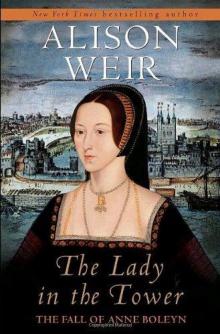 The Lady in the Tower: The Fall of Anne Boleyn
The Lady in the Tower: The Fall of Anne Boleyn Six Wives of Henry VIII
Six Wives of Henry VIII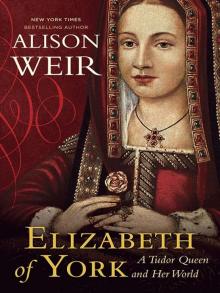 Elizabeth of York: A Tudor Queen and Her World
Elizabeth of York: A Tudor Queen and Her World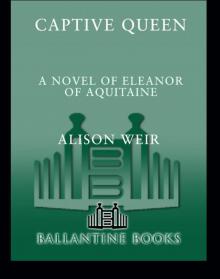 Captive Queen
Captive Queen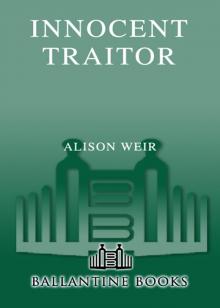 Innocent Traitor
Innocent Traitor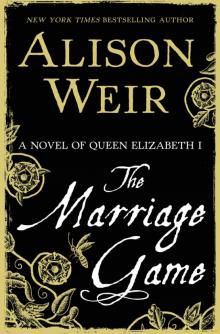 The Marriage Game
The Marriage Game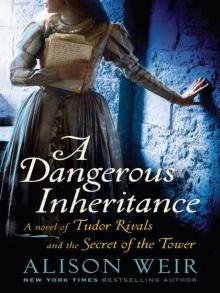 A Dangerous Inheritance
A Dangerous Inheritance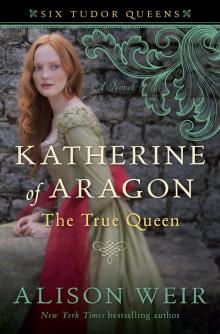 Katherine of Aragón: The True Queen
Katherine of Aragón: The True Queen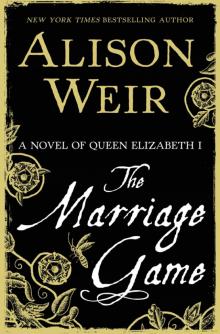 The Marriage Game: A Novel of Queen Elizabeth I
The Marriage Game: A Novel of Queen Elizabeth I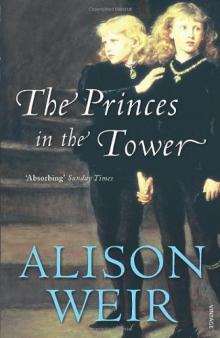 Princes in the Tower
Princes in the Tower Anne Boleyn: A King's Obsession
Anne Boleyn: A King's Obsession Traitors of the Tower
Traitors of the Tower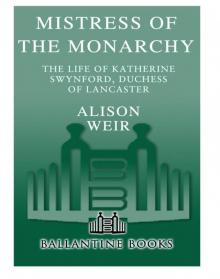 Mistress of the Monarchy: The Life of Katherine Swynford, Duchess of Lancaster
Mistress of the Monarchy: The Life of Katherine Swynford, Duchess of Lancaster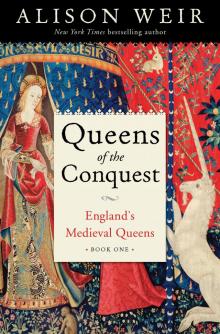 Queens of the Conquest: England’s Medieval Queens
Queens of the Conquest: England’s Medieval Queens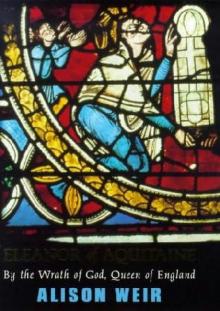 Eleanor of Aquitaine: A Life
Eleanor of Aquitaine: A Life Mary, Queen of Scots, and the Murder of Lord Darnley
Mary, Queen of Scots, and the Murder of Lord Darnley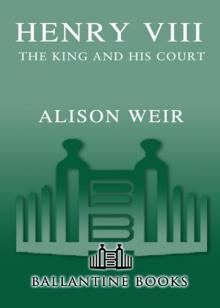 Henry VIII: The King and His Court
Henry VIII: The King and His Court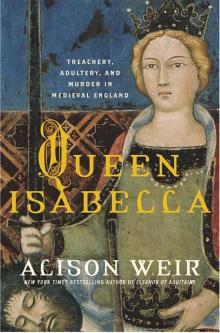 Queen Isabella: Treachery, Adultery, and Murder in Medieval England
Queen Isabella: Treachery, Adultery, and Murder in Medieval England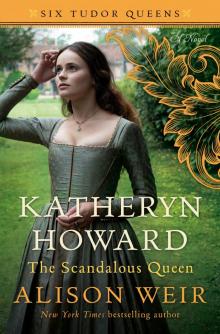 Katheryn Howard, the Scandalous Queen
Katheryn Howard, the Scandalous Queen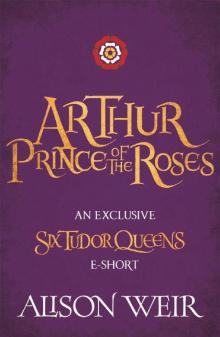 Arthur- Prince of the Roses
Arthur- Prince of the Roses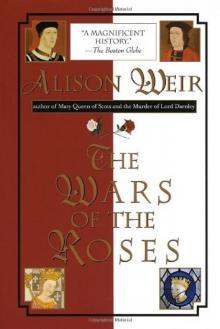 The Wars of the Roses
The Wars of the Roses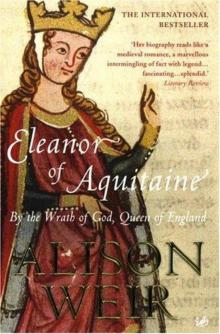 Eleanor of Aquitaine: By the Wrath of God, Queen of England
Eleanor of Aquitaine: By the Wrath of God, Queen of England Mary Boleyn: The Great and Infamous Whore
Mary Boleyn: The Great and Infamous Whore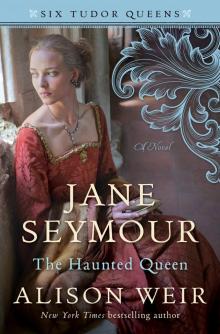 Jane Seymour: The Haunted Queen
Jane Seymour: The Haunted Queen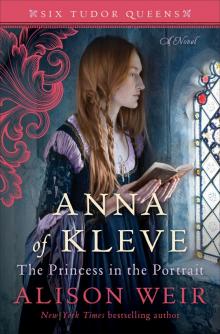 Anna of Kleve, the Princess in the Portrait
Anna of Kleve, the Princess in the Portrait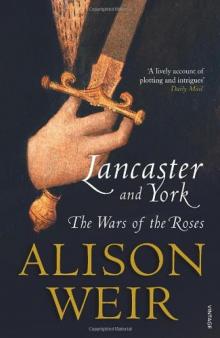 Lancaster and York: The Wars of the Roses
Lancaster and York: The Wars of the Roses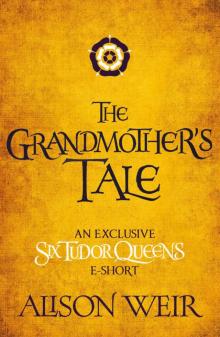 The Grandmother's Tale
The Grandmother's Tale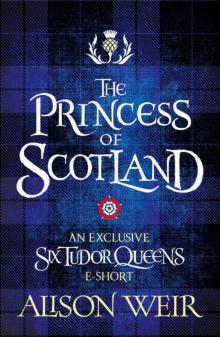 The Princess of Scotland (Six Tudor Queens #5.5)
The Princess of Scotland (Six Tudor Queens #5.5)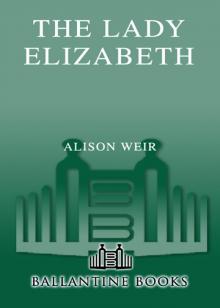 The Lady Elizabeth
The Lady Elizabeth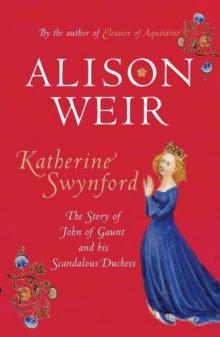 Katherine Swynford: The Story of John of Gaunt and His Scandalous Duchess
Katherine Swynford: The Story of John of Gaunt and His Scandalous Duchess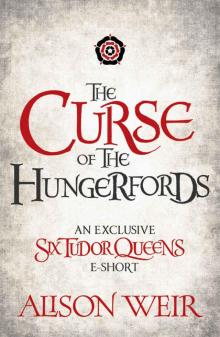 The Curse of the Hungerfords
The Curse of the Hungerfords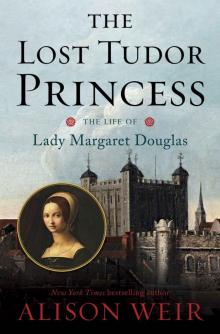 The Lost Tudor Princess: The Life of Lady Margaret Douglas
The Lost Tudor Princess: The Life of Lady Margaret Douglas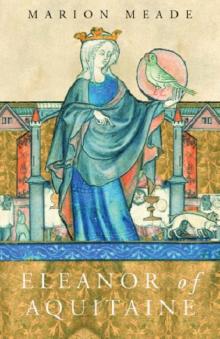 Eleanor of Aquitaine
Eleanor of Aquitaine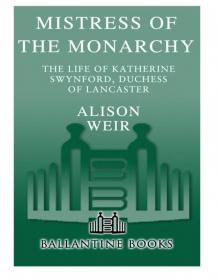 Mistress of the Monarchy
Mistress of the Monarchy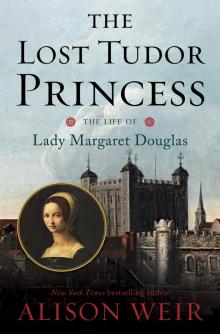 The Lost Tudor Princess
The Lost Tudor Princess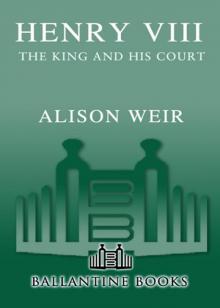 Henry VIII
Henry VIII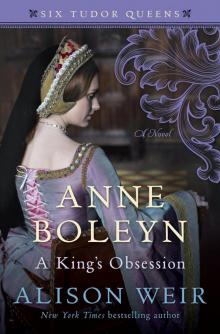 Anne Boleyn, a King's Obsession
Anne Boleyn, a King's Obsession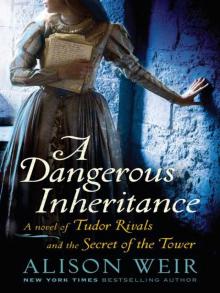 A Dangerous Inheritance: A Novel of Tudor Rivals and the Secret of the Tower
A Dangerous Inheritance: A Novel of Tudor Rivals and the Secret of the Tower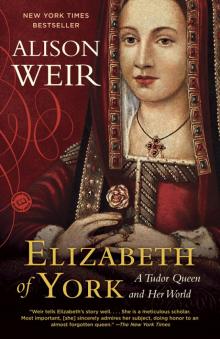 Elizabeth of York
Elizabeth of York Katherine of Aragon, the True Queen
Katherine of Aragon, the True Queen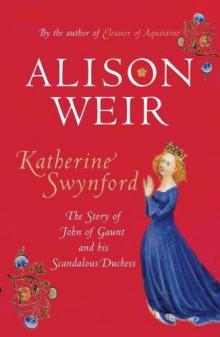 Katherine Swynford
Katherine Swynford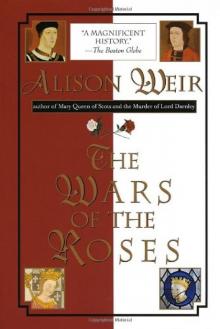 Wars of the Roses
Wars of the Roses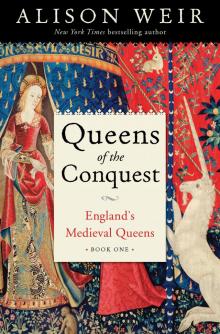 Queens of the Conquest
Queens of the Conquest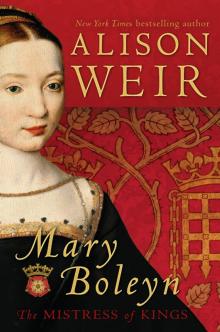 Mary Boleyn
Mary Boleyn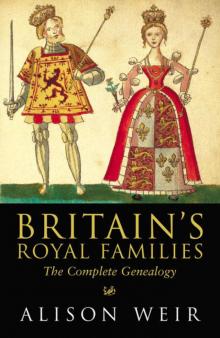 Britain's Royal Families
Britain's Royal Families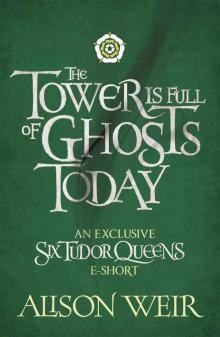 The Tower Is Full of Ghosts Today
The Tower Is Full of Ghosts Today Life of Elizabeth I
Life of Elizabeth I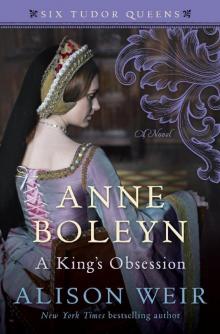 Anne Boleyn A King's Obssession
Anne Boleyn A King's Obssession Lancaster and York
Lancaster and York Jane Seymour, the Haunted Queen
Jane Seymour, the Haunted Queen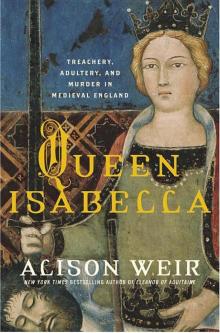 Queen Isabella
Queen Isabella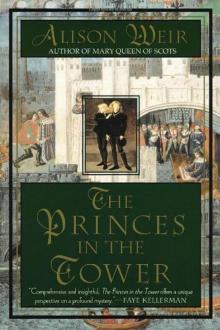 The princes in the tower
The princes in the tower